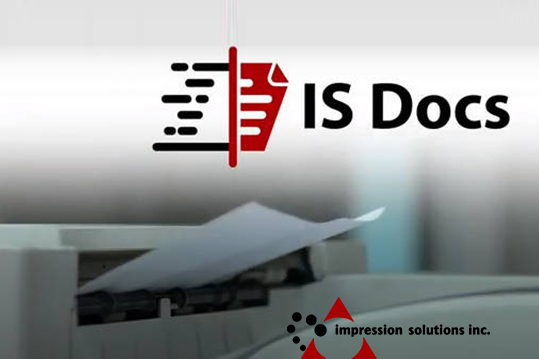Channels and Distribution Change Too
 by Ray Stasieczko
by Ray Stasieczko
We all know that everything must eventually die. Yes, even the way we do business will ultimately be replaced by the innovator’s new way. In 2018 no one in business should ever say, “That will never happen.” Instead they should say, “Currently, this is how we do it.”
The remanufactured cartridge business is not exempt from being disrupted, just because they once were the disruptor. Many will remember the OEMs crying foul and the remanufacturers complaining of unfairness.
Today there is a new disruptor: the compatible new built cartridge. Now there are new lawsuits coming from the OEMs and the cartridge remanufacturers are still complaining, but against the compatible cartridge builder.
Who’s right? Well. I guess the customer will decide.
As the demand for print declines the more significant threat to all who call the imaging channel home is not the new compatible cartridge replacing the remanufactured cartridge. The real threat to any deliverable is to ignore the customers who use them, or miscalculate the tenure of the comfort in the supplier’s current circumstances. If an OEM decides to reduce the cost of their cartridges would the reseller or end-user even buy a compatible? This scenario will play out as the market continues to decline.
Think about the office worker end-users. Today, they print less because they don’t need physical documents. Yet some imaging channel resellers, who call themselves Workflow Consultants, continue selling out-put equipment. If one were honest, they would say, “the biggest disruption in any office workflow is when one prints something from the digital world to accommodate an outdated process in the physical world.”
We all understand print is in decline, particularly in the US and Western Europe. More importantly, so is the need to print. When a customer’s need is eliminated the means to achieving that need, by default, gets eliminated too. These changes in the office printing market will most definitely impact the current channel distributors and manufacturers. It’s logical to assume manufacturers will decrease as the market needs shrink.
Today there are too many manufacturers chasing a declining market. Their growth can only come from acquiring or replacing a competitor. This fact causes the rapid race to the bottom, a race the imaging channel has been running in for years. It may not be a complete loss as the end-users win every time they replace their printer equipment that has become less and less expensive.
 What is the real disruption coming, and who will benefit?
What is the real disruption coming, and who will benefit?
A3 devices are being replaced by A4.
This shift from A3 to A4 will open many new doors for distribution while it closes the doors on yesterday’s thinking. The imaging channel has been the benefactor of the office copier/printer market since the copier was born. It has also spent decades moving end-users from A4 printers to A3 copiers that print. This channel’s engine is fueled by A3 products and their stubbornness to continue pushing them. However, times are changing, and some manufacturers understand the shift and have the means to capitalize on the movement. A4 copier-printers can more than adequately service the needs of more than 80 percent of all copiers in the marketplace. A friend at Lexmark recently told me, “Ray, hardly anyone does big paper any more.” I agree. More than 80 percent of all A3 copiers could easily be replaced by A4 devices based on declining output volumes and the feature-rich new A4 devices. Most end-users do not need A3.
Can you see the impact of what I call the “A4 Revolution” not only affecting legacy channel distribution but also supply distribution? Think about this. Nearly all A3 copier/printer equipment is under a contractual agreement: end-users pay a fee per month, for service, supplies, parts and hardware cost. These contractual agreements are begging for a new innovator with an A4 strategy. Such an innovator could easily be a re-invented legacy A3 distributor, or an office products distributor who is willing to explore how A3 copiers/printers could be replaced with A4 products.
Both remanufactures and new built cartridge manufacturers should pay attention. Every A3 device that is replaced by an A4 device will be contractual. Yes, end-user contracts that will include equipment, service, parts, and supplies. These all-inclusive agreements give the power of supply purchase decisions to the holder of the contractual agreement. These dealers or resellers will look for the supplies which give their customers quality and give them a larger ROI. These contractual agreements take away the need to sell the merits of a cartridge to end-users; the cartridges are included in the package.
This means the arguments for and against new built compatibles or remanufactured cartridges will be evaluated by the resellers, not their end-user customers. Let’s not underestimate an OEM manufacturer, as I suggested earlier, who might totally disrupt everyone by lowering their cost of supplies to compete and grab this new market.
Can A4 change the game for the office products channel?
Absolutely and the change is good.
Many office products re-sellers and IT service providers have participated in Managed Print Services (MPS) seminars and heard the benefits. During the 2000’s, many participants significantly benefited from the MPS strategy. Today, MPS is merely a term used to describe a billing process. It is also used to convince print resellers that print is growing. I read an article recently titled “Managed Print Reaches 50 Billion by 2025.” I would argue, whatever they counted in that US$50 billion number for 2025 as managed print would be valued today as 55-60 billion. The article’s title should have been, “All print services Will Be Reclassified as Managed Print by 2025: a loss of between US$5-10 billion from 2018.”
Channel resellers who learn how to profit from the decline in print, by replacing A3 equipment with A4 equipment, have a fantastic opportunity to capture the largest portion of copy/print equipment market share. The imaging channel will get disrupted, and the A4 movement will cause those who remain stubborn to suffer. It will be the invitation for innovators to change the game.
Data supplied by BEI Services, the world’s largest database of printer/copier service metrics, proves interesting. They have over 4 million devices and 15,000 technicians doing over 40,000 service calls a day in their Worldstats™ database. Simply put, 80 percent of A3 equipment should be A4 equipment. As end-users begin to discover this, they will they demand its delivery resulting in many copier/printer dealers losing great legacy relationships. The new or re-invented dealer who delivers a better A4 experience will be the winner.
“Today customers don’t want to evaluate good service by how good you are every time you show up; they want to evaluate products that don’t require you to show up.”
As manufacturers continue improving equipment, it will drastically reduce the need for replacement parts resulting in fewer service interactions as well. In the near future, almost all A3 walk-up copier/printers will be replaced by A4’s and the millions of A4’s, with their all-in-one cartridges, will open up a whole new world.
Everything changes. Every business must be able to discuss and understand the threats they face, and the opportunities that become available when threats are “explored” instead of being “ignored”.
[Author: Ray Stasieczko, the Founder of TEASRA: the Innovation Channel. “We strive to help our members deliver the future to the present. Because we understand this statement. “A company becomes obsolete when they focus on bringing the past to the future instead of bringing the future to the present.” Contact Ray at ray.s@teasra.com ]





Leave a Comment
Want to join the discussion?Feel free to contribute!